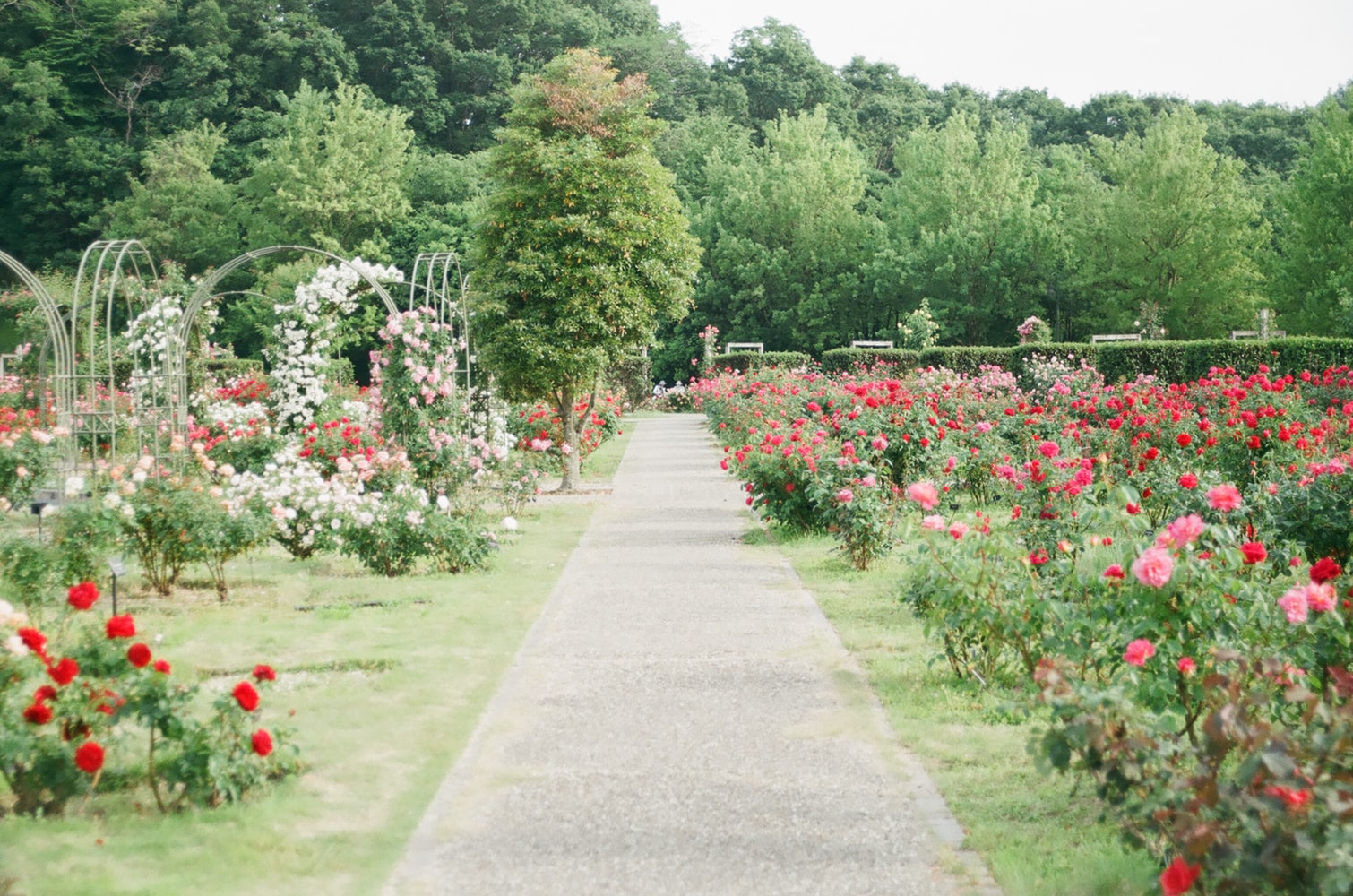A Brief History of the English Garden
The garden truly is an integral part of an Englishman’s home. Whatever its size or makeup, it allows us an immediate opportunity to connect with nature, bask in the sun and take in some fresh air. It provides a useful social platform too. It’s a place to enjoy a cool drink with friends, tuck into a tasty barbeque with family and enjoy a game of football with the kids. At this time of year, when you’re scaling down your gardening activities. Pour yourself a cup of tea or a pint of cider and join us for a brief trip back in time, as we explore the history of the English garden.
The Arrival of the English Garden
As with so much else that we take for granted today, gardens arrived with the Romans. They brought new varieties of flowers, such as roses; vegetables, for example, leeks and turnips; as well as exotic fruits, like plums. Indeed, fruit and vegetables were an integral part of the Roman garden, which also included plants and fountains, within an enclosed space. Larger villas would usually contain gravelled walkways, flanked by symmetrical hedges, where mall enclaves housed statues, ornaments and seats.
New Era = New Garden Style
Following the collapse of the Roman Empire, the medieval period saw new styles of garden emerge. Anglo-Saxon gardens, although not as intricate as Roman ones, including orchards, vineyards and turf mazes. Monasteries, the centres of culture and learning during this era, contained both kitchen and herb gardens. Which provided the ingredients for the medicines that the monks produced. The cloister also offered space for contemplation. A walkway ran around the perimeter of a carefully manicured lawn which would usually be decorated with a centrepiece, such as a well or a fountain.
The rise of courtyard gardens
The centuries following the Norman Invasion of 1066 saw the building of castles across the land. They tended to include courtyard gardens, where the occupants could sit on turfed seats, admiring lawns, delicately studded with wildflowers. As the castle gave way to the rise of the manor house, a gentleman’s garden would also include a simple lawn where games such as bowls and tennis could be played.

Tudor symmetry
Tudor gardens were heavily influenced by the Italian style. Meaning they were carefully aligned to the house, creating symmetry that was missing from earlier periods. Square, formal gardens, lined with hedges, contained a variety of flowers: indigenous, wild ones, such as daisies; imports, like primroses; whilst the rose was usually given pride of place. The Tudor period also saw the return of statues and sundials. Trees were located alongside walkways to provide shelter from the sun.
Stuart English Gardens
By the time of the Stuarts, the Italian influence had given way to a French one. Broad walkways, flanked by carefully manicured hedges, led from the house onto the estate, where flowerbeds were delicately arranged in rectangular patterns.
In the eighteenth century, this more natural style replaced the intricate designs. Described in some quarters as ‘gardenless gardens’. William Kent and Capability Brown were two of the pioneers of this approach. The lawn was laid to run straight up to the house, whilst small clumps of trees and serpentine lakes dotted the landscape. Far from being the enclosed, private spaces of earlier periods. Landscape gardens were designed to appear to run on indefinitely, promoting a feeling of space and connecting the house to the outside world.
Indeed, some designs included carriageways leading to distant features, such as forests, churches, and even mock castles. This style was all the rage amongst the new class of landed gentry, made rich by the Industrial Revolution. Suddenly, rather than being influenced by the continent, the English landscape garden was itself being copied. Even Marie Antoinette introduced a Jardin Anglais outside her Petit Trianon, at The Palace of Versailles.
Victorian English Gardens Boosts Imported Flowers
As Britain’s role abroad increased, her empire grew. An abundance of new, exotic flowers, plants and trees appeared in the English garden. This reached its peak in Victorian times. Imports from strange, far-flung places, such as Africa and China, grew in greenhouses and conservatories across the land. The pendulum had swung back from the ‘natural look’, towards colourful, intricate designs of flowerbeds. That said, both formal and informal arrangements were still popular. In fact, an emergent trend in the 1830s where tougher perennials started replacing annuals, while herbaceous borders were backed by walls and hedges. People started to arrange flowers to mimic nature, rather than in carefully lined rows.
The Victorian era also saw a huge increase in public parks and gardens, as the elite sought to educate the masses of the industrialised towns on the benefits and beauty of nature. In 1840, Kew Gardens started, showing off the world’s largest and most diverse collection of living plants. Interestingly this time also saw the birth of allotments, which have been a source of high-quality fruit and vegetables right up to the present day.
Twentieth Century gives rise to a Home Garden
The twentieth century witnessed the extension of the ‘garden franchise’. Enabling many people to own what their ancestors could only witness in public places. The modern era of gardening has also seen the return of the ‘cottage garden’ tradition. Where the garden is an extension of the home. The popularity of patios, decking and wheelie-bin storage units testify to this feeling that an Englishman’s castle stretches to his back fence. As opposed to his back wall. Climbers on walls, herbaceous borders and an abundance of flowers in lavish colour schemes are also key features of this cottage garden style.
So, the English country garden has done what is essential to survive; it has adapted to change. Fashions will continue to come and go. But the basic need for a well maintained, green space will always be with us. Over the coming months, as the days get colder and the nights draw in, why not plan something special for your garden, next year? A herbaceous border, new flowerbeds. Or a practical, wooden wheelie-bin storage unit are all things that can add something to the outdoor space of your home.
If we peaked your interest in even more helpful tips and interesting history. Check out our blog.








